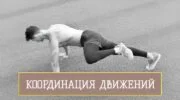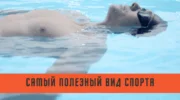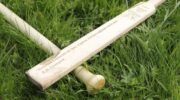In the article “Badminton” we will tell you about one of the racquet sports. You will learn the history of badminton, the rules and unique features of the equipment for the game.
#Badminton #AboutBadminton #ProBadminton #SummerSport
References to the game of badminton can be found in the annals of ancient Greece 2,000 years ago. However, the creation of badminton is attributed to India, because in the mid-19th century it was played there in Pune (a version of the game that is very similar to modern badminton).
Historians cannot identify the specific person who invented the game. But there is a theory that high-ranking officers stationed in India in 1870 created the game as a way to relax and keep fit.

Another version says that badminton appeared only in the middle of the 19th century, when members of the British royal family were looking for a new activity that required minimal equipment and little time to assemble and prepare.
Badminton was not a popular sport until the 20th century. Only in 1899, the first championship in the sport was held in England. In 1934, a worldwide federation was established, and in 1972 badminton was included in the Olympic Games program.
At first, badminton was only played by men in pairs (one-on-one), but gradually the rules were adjusted and women could also take part. Later, the number of participants in the match was expanded to 4, and it could be a mix (man + woman).
The most widespread and popular badminton is in China, South Korea, Denmark, England and Sweden. But Russian athletes also worthily represent our country in international championships and tournaments.

The first Olympic medal was won very recently, in London 2012. In doubles Nina Vislova and Valeria Sorokina reached the third step of the podium. Vladimir Ivanov and Ivan Sazonov became European champions in 2014 and 2021, and in 2016 were able to win a resounding victory at the prestigious “All England Open” tournament.
The rules of badminton are very similar to those of tennis. Both sports use a rectangular court with a net suspended in the center. In badminton, instead of the usual tennis ball is used shuttlecock.
The shuttlecock is thrown with rackets over the net until it touches the ground. When the shuttlecock touches the court, play stops and one point is awarded to the team that was able to land it on the opponent’s side.

If the shuttlecock hits the net or lands outside the court, the player or team who last touched the shuttlecock loses the point. A loss of a point shall also be scored if a player touches the shuttle with his body or clothing, sends it to the ceiling or fails to serve correctly.
Serving in badminton is done diagonally. With an even score (10 or 8) serve from the right side of the court, with an odd score from the left side. The initial right to serve is drawn by tossing a coin. In singles, a player serves until he/she loses the toss. In doubles, the serving parties change on each new draw.
A badminton match consists of 3 games and games are played up to 21 points. If the score is tied, the game will continue until one of the players reaches a 2-point advantage or the first player reaches 30 points.
The game changes hands after the first and second game. If a third game is scheduled in the game, the changeover takes place when one of the parties will score 11 points. The break between halves is only 2 minutes.
In professional competition there are certain rules that determine the size, weight and special order of stringing in the racket. The total weight of the racket must be between 80 and 100 grams, it must not be more than 680 mm in length and 230 mm in width.
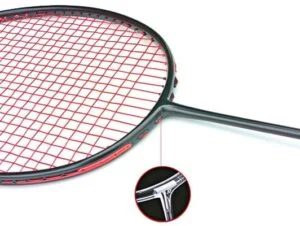
Modern racquets consist of a rod, a handle and a head. The head of a badminton racket is a multi-layered and technologically advanced pie made of composite materials. The frame of the head is made of composite titanium, which is covered with several layers of carbon and modified graphite.
The core of the racket is made of cast aluminum or lightweight titanium. They try to make it as thin as possible to reduce air resistance and increase the speed of the arm movement at swing.
The handle of the racket is made of ultra polyethylene fiber. This material is so light that it can float on water. The lightness is needed to better center the racquet and increase the energy output of the entire structure. The higher the center of gravity to the head, the more powerful the athlete’s kick.
A few years ago, the strings of the racket were made of natural materials, mostly from ox veins. Nowadays, synthetics hold the monopoly on the courts. All professionals perform only with laminated strings.

A multilayer string consists of a core, a braid and a sheath. The core of the string is made using carbon nanotube technology. A synthetic fiber, the braid, is wound in a spiral around the core. The purpose of the braid is to keep the original tension of the string as long as possible. The sheath protects the whole structure from the powerful and piercing blows.
There are also rules that determine the weight and size of the shuttlecock, because the use of unregulated parameters can give an advantage to one of the parties. The length of the shuttlecock should be between 62 and 70 mm and the weight between 4.74 and 5.5 grams.
Once upon a time, the basis of a badminton projectile was a dried cherry bone and a few feathers attached to it. By the 21st century, little has changed. Despite all the know-how, shuttlecocks for official competitions are still made by hand and only from natural materials.
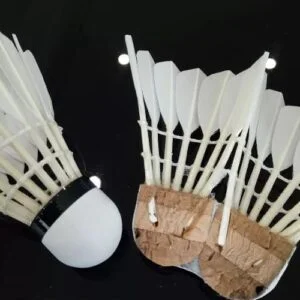
Sixteen goose feathers are glued into the cork head around the circumference. The thread binding the feathers should be only cotton, and varnish from natural components. The varnish covers the whole shuttlecock to give it elasticity and resistance to shocks.
The best feather shuttlecocks for professional sports are made in the motherland of badminton, in South-East Asia. Assembly of the projectile begins with the head, its shape has been perfected over the centuries, and the material is mined only in one place on the planet, in Taiwan.
The head is covered with thin natural skin, which protects against shock and also improves contact with the strings of the racket. Special requirements for the feathers of the shuttlecock. They go through multistage manual sorting by shape, weight and firmness. Feathers are taken from the wing of a year-old goose, and the best 3 feathers are considered to be at the base of the wing.
But the main technological secret of the shuttlecock is a natural varnish. It turns a fragile feathered structure into a flexible and shockproof projectile. Modern lacquers have greatly increased speed, and the survival rate of the shuttlecock has increased almost threefold.
In the game of badminton for compliance with the rules are monitored by 3 types of referees: the head referee, match referee and line judges. The head referee is responsible for the oversight of the competition and is the person to whom you can appeal against the decisions of the match referee.
During the game, the speed of a shuttlecock can reach incredible values. At the moment, the speed record was fixed at 493 km / h, though, it happened in 2013 and in laboratory conditions. But, nevertheless, the speed of the shuttlecock exceeds the speed of the puck by more than 2 times.
During a game, an athlete can lose 3 pounds and run more than 2 km with acceleration and deceleration. To win, you must sometimes hit as many as 20,000 shots and reflect as many more. Playing badminton develops aerobic endurance and reaction speed.
Based on published research in the UK, badminton, like tennis, is the most beneficial sport. You can read more about the research in our article, “The most useful sport“.
The badminton section is accepted from the age of 5. True, some coaches recommend starting classes a little later, from the age of 8 years. This sport will help strengthen the cardiovascular system, improve vision, help develop leg, arm, back and abs muscles, you will become agile and enduring.
In addition, scientists have proved that badminton has a positive effect on the emotional state, as while playing the nervous system is engaged more than even in power sports. Badminton is also a safe sport, the risk of injury is minimal.
Badminton rules
FAQs
What is badminton?
Badminton is a summer sport in which players throw a shuttlecock over a net until it touches the ground. One point is awarded for each shuttlecock that lands on the opponent's side.
Why is badminton served from below and not from above?
Serving in badminton is regulated by the rules of the game "First strike". When serving, the player may not take his feet off the court, and the serve is served from a static position. The shuttlecock must be no more than 115 centimeters above the floor and the head of the racket must point downwards. The shuttlecock must be struck clearly on the head of the shuttlecock, not on its feather part.
Why do Asians win in badminton?
This is due, above all, to the popularization of the game. Badminton is a very popular sport in Asia, the championships are broadcasted on all TV channels, and the number of clubs and sections is in the thousands. Naturally, with great involvement, competition between players within the country also increases. Competition allows for a tougher selection for the World Cup and the Olympics, and this has a positive effect on the result. And even with this competition, Asians do not always win. There have been examples of European players winning medals at the Olympics. For example, Victor Axelsen from Denmark won the singles title at the 2020 Olympics. And Russia's Valeria Sorokina and Nina Vislova were bronze medalists at the 2012 London Games.


